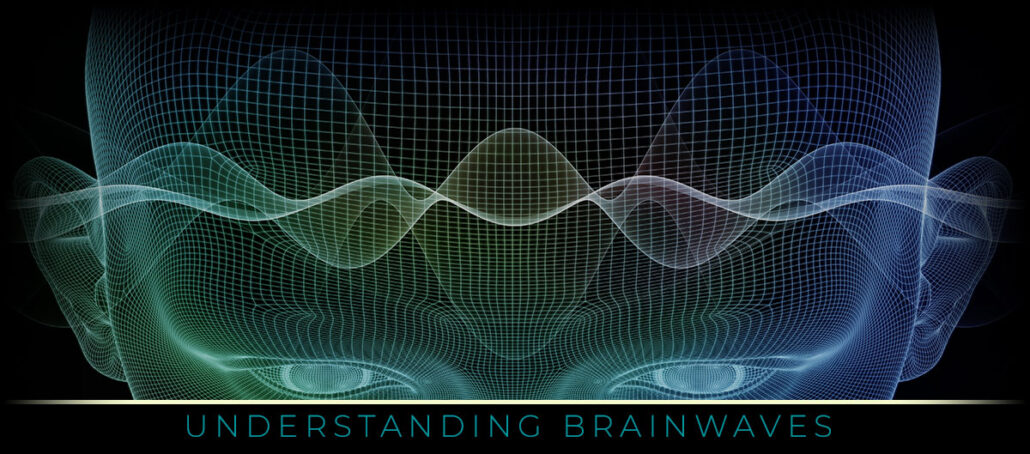
The normal human brain has 5 types of brainwaves: Delta, Theta, Alpha, Beta and Gamma waves. Each brainwave has a distinct purpose and helps us behave, think, move and process. Although they trigger automatically, it’s our own ability to modulate between them that determines how well we cope with pressure, rational and irrational thoughts, task management and more. If our physiology, diet or environment causes an overproduction or underproduction of a certain brainwave, it can alter the balance of our bodies and induce many negative effects such as insomnia, anger, stress, learning difficulties or anxiety.
This is why it’s important to maintain healthy brainwave states. But sometimes these brainwaves run fast or slow, or get altered in a way we cannot control. When this happens, many neurological conditions can occur. In fact, many common issues like anxiety, depression and ADHD are the direct result of dysfunctional brainwave activity.
Se let’s look at each brainwave and see what is does and how it affects you.
Delta waves are associated with deep levels of relaxation and restorative sleep, to remember this simply think of ‘Delta’ for ‘Deep’. They are the slowest recorded brain waves in humans and higher levels are more commonly found in young children. During the aging process, lower Delta waves are produced. Research tells us that Delta waves are attributed to many of our unconscious bodily functions such as regulating the cardiovascular and the digestive systems. Healthy levels of Delta waves can contribute to a more restful sleep, allowing us to wake up refreshed, however irregular delta wave activity has been linked to learning difficulties or issues maintaining awareness.
Frequency range: 0.5 Hz to 3 Hz
High levels: Head injuries, learning problems, severe ADHD, immune disorders, severe substance abuse, severe anxiety and major vegetative depression.
Low levels: Inability to rejuvenate body, inability to revitalize the brain, poor sleep
Optimal range: Healthy immune system, restorative REM sleep
Theta waves known as the ‘suggestible waves’, because of their prevalence when one is in a trance or hypnotic state. In this state, a brain’s Theta waves are optimal and the patient is more susceptible to hypnosis and associated therapy. The reasoning for this is that Theta waves are commonly found when you daydream or are asleep, thus exhibiting a more relaxed, open mindstate. Theta waves are also linked to us experiencing and feeling deep and raw emotions, therefore too much theta activity may make people prone to bouts of depression. Theta does however has its benefits of helping improve our creativity, wholeness and intuition, making us feel more natural. It is also involved in restorative sleep and as long as theta isn’t produced in excess during our waking hours, it is a very helpful brainwave range.
Frequency range: 4 Hz to 7 Hz
High levels: ADHD or hyperactivity, depressive states, impulsive activity or inattentiveness, delusion, psychotic states and seizure disorders.
Low levels: Anxiety symptoms, poor emotional awareness, higher stress levels
Optimal range: Maximum creativity, deep emotional connection with oneself and others, greater intuition, relaxation
Alpha waves are the ‘frequency bridge’ between our conscious thinking (Beta) and subconscious (Theta) mind. They are known to help calm you down and promote feelings of deeper relaxation and content. Beta waves play an active role in network coordination and communication and do not occur until three years of age in humans. In a state of stress, a phenomenon called ‘Alpha blocking’ can occur which involves excessive Beta activity and little Alpha activity. In this scenario, the Beta waves restrict the production of alpha because we because our body is reacting positively to the increased Beta activity, usually in a state of heightened cognitive arousal.
Frequency range: 8 Hz to 11 Hz
High levels: Too much daydreaming, over-relaxed state or an inability to focus
Low levels: Addictions, OCD, chronic pain, stress disorders, fear, frustration and depression
Optimal range: Ideal relaxation
Beta waves are the high frequency waves most commonly found in awake humans. They are channeled during conscious states such as cognitive reasoning, calculation, reading, speaking or thinking. Higher levels of Beta waves are found to channel a stimulating, arousing effect, which explains how the brain will limit the amount of Alpha waves if heightened Beta activity occurs. However, if you experience too much Beta activity, this may lead to stress and anxiety. This leads you feeling overwhelmed and stressed during strenuous periods of work or school. Beta waves increased by drinking common stimulants such as caffeine or L-Theanine, or by consuming Nootropics or cognitive enhancers such as Lucid. Think of Beta as the ‘get shit done’ state of mind.
Frequency range: 12 Hz to 40 Hz
High levels: Anxiety, inability to feel relaxed, high adrenaline levels, stress
Low levels: Depression, poor cognitive ability, lack of attention
Optimal range: Consistent focus, strong memory recall, high problem solving ability
Gamma waves are a more recent discovery in the field of neuroscience, thus the understanding of how they function is constantly evolving. To date, it’s known that Gamma waves are involved in processing more complex tasks in addition to healthy cognitive function. Gamma waves are found to be important for learning, memory and processing and they are used as a binding tool for our senses to process new information. In people with mental disabilities, much lower levels of Gamma activity is recorded. More recently, people have found a strong link between meditation and Gamma waves, a link attributed to the heightened state of being or ‘completeness’ experienced when in a meditative state.
Frequency range: 40 Hz to 100 Hz
High levels: Anxiety, stress
Low levels: Depression, ADHD, learning issues
Optimal range: Information processing, cognition, learning, binding of senses.
